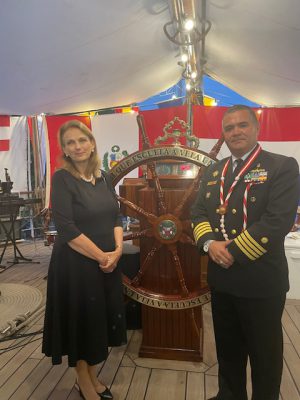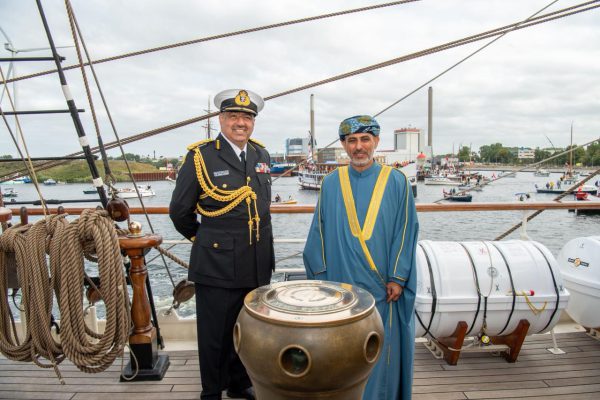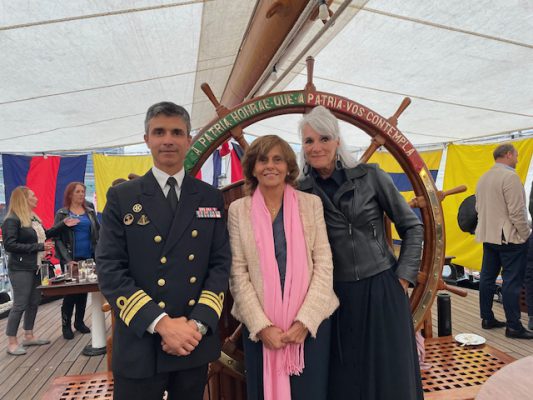SAIL Amsterdam 2025 was one of the largest national events in the Netherlands and was the tenth edition of the maritime event SAIL Amsterdam, held from 20 to 24 August 2025 in Amsterdam. After a ten-year hiatus, the event returned in 2025, having last taken place in 2015. The event featured a parade of tall ships, modern ships, and various naval vessels arriving via the North Sea Canal.
SAIL Amsterdam 2025 officially began on 20 August with the traditional Sail-In Parade. During this opening event, a large fleet of tall ships and accompanying vessels sailed from IJmuiden to the IJ harbor in Amsterdam. The spectacle drew large crowds along the canal to witness the arrival of participating ships. The event showcased a variety of ships, from historical replicas to state-of-the-art sailing vessels.The event attracted 2.5 million visitors. The director of the SAIL Amsterdam, Mrs. Mitra van Raalten informed me that the Sail Amsterdam takes years and years of preparation, as she personally travels to all the participating countries as to visit the tall ships and to meet the commanding officers.
The following tall ships participated for the first time this year: Shabab Oman II – training ship of the Royal Navy of Oman; Gorch Fock – training ship of the German Navy; BAP Unión – training ship of the Peruvian Navy; Eye of the Wind – a German brigantine; Pascual Flores – a Spanish three-masted ship; Vera Cruz – a Portuguese caravel; Anna af Sand – a Norwegian Hardangerjakt built in 1854, and one of the oldest wooden sailing cargo ships in Europe still in operation.Witte Swaen – Dutch replica of the 16th century Dutch ship used by explorer Willem Barentsz during his 1596 Arctic expedition to find a northern passage to Asia
SHABAB OMAN II, a Sailing Ambassador of Peace and Friendship.
Since 1979, the naval ship Shabab Oman has carried the Sultanate of Oman’s message of peace, friendship and cultural exchange across the world’s seas. In 2014, Shabab Oman II took over this mission from her predecessor. This impressive ship is much more than a symbol of maritime tradition, she is an ambassador under sail and a proud emblem of 400 years of maritime connection. With her graceful lines, three imposing masts and 34 sails, Shabab Oman II is one of the longest sailing ships of the clipper class. Her V-shaped hull and 2,630 m² of sail area allow her to reach speeds of up to 17 knots.
But the ship is also a place for development. Every year, dozens of young people from Oman are trained on board. They learn traditional seamanship, navigation and leadership, with teamwork and personal growth at the core. The ship can accommodate 54 crew members and 36 trainees. The magnificent Shabab Oman II is a sister ship to the Clipper Stad Amsterdam. Both ships were built on Dutch soil by the Damen Shipyards Group. With her elegant appearance and deep cultural significance, Shabab Oman II makes a lasting impression wherever in the world she docks.
B.A.P. UNIÓN, Peru’s maritime pride and cultural heritage
The B.A.P. Unión is the very first training ship of the Peruvian Navy. It’s a magnificent four-masted vessel with a steel hull, built between 2012 and 2015 by SIMA (Shipyard Marine Industrial Services of Peru) and launched in 2015 in Spain. The Unión is the largest sail ship in Latin America. Beyond its primary role as a training ship for officers and cadets, the Unión also serves as a sailing ambassador, promoting Peru’s rich culture and heritage around the world. The ship’s striking bronze figurehead was crafted by Peruvian sculptor Pilar Martínez Woodman and is a tribute to the rich Inca culture. It features the Sapa Inca Tupac Yupanqui, a symbol of leadership and wisdom, with his arm raised toward the sun god Inti. Both are surrounded by symbols such as the twelve-angled stone and puma heads, representing the vast Inca Empire and Peru’s deep-rooted history. Inside, the Unión is equipped with modern training facilities, including an auditorium, classrooms, and a library, ensuring cadets are well-prepared in various maritime disciplines. The BAP Unión is not just a ship; it’s a floating symbol of Peru’s maritime pride and cultural heritage.
On Friday 22 January on board the ship, a wonderful reception took place for the guests of the Ambassador H.E. Mrs. Franca Lorella Deza Ferreccio of Peru and the Commanding Officer Captain Juan José Roncagliolo Goméz. The guests enjoyed the delicious Peruvian food and cocktails.
The SAGRES II, Portugal Maritime Flagship
From Hamburg shipyard to global circumnavigator, the SAGRES II is a floating piece of European history with deep roots in Germany. Originally built in 1937 at Blohm & Voss in Hamburg as the Albert Leo Schlageter, she was the last and most advanced training vessel of the former German Navy. World War II allowed her only a few peaceful voyages. A sea mine severely damaged the ship, and her fate seemed sealed. After the war, the Americans took her over in Bremerhaven, and in 1948 she was handed to Brazil as part of war reparations. Renamed Guanabara, she sailed the waters of South America until Portugal acquired the proud vessel in 1961 to replace the old training ship Sagres I. Today, the SAGRES II stands tall as Portugal’s maritime flagship, a proud symbol of discipline, discovery, and international unity. Her figurehead represents Prince Henry the Navigator, that visionary who ushered in the Age of Exploration. Also, on Friday evening, on this ship a very nice reception was offered by the Ambassador of Portugal, Mrs. Clara Nunes dos Santos and the Commander José Sousa Luís for their guests with Portuguese food and drinks. There was a great ambiance.
Written by Nanda Jagusiak-Monteiro


